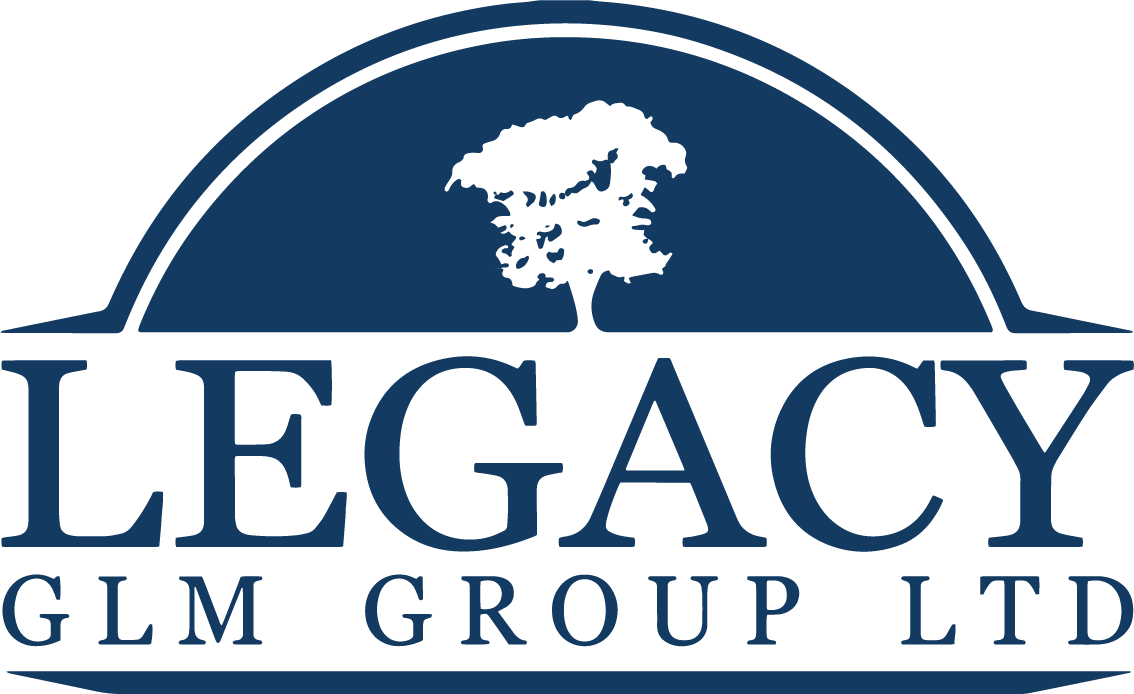
When managing a commercial property, deciding between planned vs reactive maintenance is a significant decision that can affect both your budget and the smooth running of your business. Planned maintenance involves proactively scheduling regular inspections and tasks to keep everything in optimal condition. On the other hand, reactive maintenance is performed in response to unexpected issues, such as a broken piece of equipment or a leaking pipe. The key difference between these two approaches is in how they are managed – one is planned ahead of time, while the other is a response to an urgent problem.
For commercial property owners and managers, ensuring the property runs smoothly and safely is a top priority. A well-maintained property can prevent disruptions in business, improve employee and customer satisfaction, and ensure the longevity of your building and equipment. However, the approach you take can have long-term implications on your budget and operational efficiency.
Planned maintenance focuses on preventing problems before they arise. It is designed to keep systems functioning optimally, reduce the likelihood of breakdowns, and extend the lifespan of equipment. Reactive maintenance, however, focuses on addressing issues only when they occur. While it might seem more convenient, it often leads to higher costs, unplanned downtime, and potential disruptions to business operations.
In this article, we will explore both approaches, explain the benefits of planned maintenance, the challenges of reactive maintenance, and help you decide which strategy is best for your commercial property. By understanding the pros and cons of each, you can make an informed choice that balances cost-effectiveness with operational efficiency.
What Is Planned Maintenance?
Planned maintenance refers to the proactive approach of scheduling regular maintenance tasks in advance to ensure the ongoing efficiency and safety of a property’s systems and equipment. Unlike reactive maintenance, where work is only carried out when something breaks or malfunctions, planned maintenance is performed on a predetermined schedule to prevent issues from occurring in the first place.
At its core, planned maintenance is about anticipating the needs of your property and preparing for potential problems before they arise. This could include anything from routine inspections and cleaning to servicing and replacing worn-out equipment. Regular checks of heating, cooling, electrical, and plumbing systems are common examples of planned maintenance tasks that help keep a building running smoothly.
Benefits of Planned Maintenance
-
Cost Savings: Regular maintenance reduces the likelihood of costly emergency repairs and replacements. By addressing minor issues before they escalate, planned maintenance prevents the high costs associated with major system breakdowns.
-
Reduced Downtime: When systems and equipment are well-maintained, there is less chance of unexpected failures that could disrupt business operations. Regular maintenance ensures everything operates efficiently, which can help reduce or even prevent downtime.
-
Prolongs Equipment Life: By scheduling routine inspections and servicing, the lifespan of equipment and systems is extended. This means less frequent need for costly replacements, allowing property owners to get the most out of their investments.
-
Improved Safety: Regular maintenance ensures that all safety equipment (such as fire alarms, security systems, and emergency exits) is functioning correctly. This is essential for ensuring the safety of employees, tenants, and visitors to the property.
Examples of Planned Maintenance Tasks
-
Routine Inspections: Regular checks of HVAC systems, plumbing, and electrical equipment to ensure everything is functioning properly.
-
Cleaning: Routine cleaning of air ducts, vents, and other systems to maintain efficiency and prevent blockages.
-
Equipment Servicing: Servicing machinery, elevators, and boilers as per manufacturer recommendations to prevent unexpected breakdowns.
-
Safety Checks: Ensuring fire extinguishers, smoke alarms, and security systems are operational and compliant with safety regulations.
How Planned Maintenance Helps Your Business
For property owners, adopting a planned maintenance strategy provides peace of mind. It ensures that everything is in good working order, which not only helps with the long-term durability of the property but also enhances tenant satisfaction. Additionally, it makes the property more attractive to potential tenants or buyers as it demonstrates that the building is well-maintained and in good condition.
By scheduling regular maintenance, property managers can plan their budgets more effectively, avoid sudden emergency costs, and maintain a high standard of property management. Whether you’re managing a single commercial building or multiple properties, planned maintenance is an investment that pays off over time.

What Is Reactive Maintenance?
Reactive maintenance, often referred to as “breakdown maintenance,” is the process of repairing or replacing equipment and systems after a problem or failure has occurred. Unlike planned maintenance, which is proactive and scheduled in advance, reactive maintenance is carried out in response to an immediate issue. This approach is typically used when something breaks down unexpectedly and requires urgent attention to restore normal operations.
With reactive maintenance, the focus is on reacting to problems as they arise. For example, if a plumbing system springs a leak, the repair work is initiated only after the problem is detected. Similarly, if a piece of machinery stops working, repairs are carried out once the malfunction is identified. While this type of maintenance can sometimes seem more convenient, it comes with its own set of challenges.
Advantages of Reactive Maintenance
-
Lower Initial Costs: Reactive maintenance can seem like a cost-effective choice because you only pay for repairs when something goes wrong. There’s no need for an upfront investment in regular checks or preventative services, which might seem like an appealing choice for property owners looking to cut down on expenses.
-
Flexibility: With reactive maintenance, you don’t have to commit to a strict schedule. Repairs are performed when necessary, giving property managers the flexibility to respond to immediate issues without being tied to a maintenance plan.
-
No Wasted Services: Since you’re only fixing what’s broken, you’re not spending money on tasks that aren’t needed at the moment. For example, if your building’s heating system is working fine, there’s no need for regular checks or servicing.
Disadvantages of Reactive Maintenance
-
Higher Long-Term Costs: While reactive maintenance may seem cheaper at first, the costs can accumulate over time. Reactive repairs often involve emergency services, which tend to be more expensive than routine maintenance. Additionally, repeated breakdowns of poorly maintained equipment can lead to larger repair bills or the need for early replacements.
-
Unpredictable Downtime: Reactive maintenance can result in unplanned downtime. For businesses, this can be a significant problem as operations may be disrupted when equipment or systems unexpectedly fail. For instance, a sudden breakdown of essential machinery could lead to hours or even days of downtime, causing productivity loss and customer dissatisfaction.
-
Damage to Equipment: When maintenance is only performed after a failure occurs, it can result in further damage to the equipment. For example, a small issue left unaddressed can snowball into a larger, more expensive repair. This can reduce the lifespan of equipment, ultimately costing more in the long run.
-
Increased Risk to Safety: If safety equipment or systems like fire alarms or smoke detectors fail, the results can be severe. Delays in fixing these systems after a failure can put building occupants and assets at risk, leading to safety violations and possible legal consequences.
How Reactive Maintenance Affects Property Owners
For property owners and businesses, relying solely on reactive maintenance can create an unstable environment. You may find that unexpected repairs become more frequent, and costly breakdowns result in an unpredictable cash flow. It can also increase tenant dissatisfaction, especially if essential systems (e.g., heating, cooling, plumbing) break down repeatedly.
That said, reactive maintenance isn’t necessarily a bad thing in certain situations. For small-scale properties or when dealing with low-risk systems, reactive maintenance may be appropriate. However, it should not be the sole strategy for managing the property’s needs. A mix of planned and reactive maintenance is generally seen as the most effective way to ensure the long-term health of a building.

Planned Vs Reactive Maintenance: Pros And Cons
When managing a property, understanding the differences between planned maintenance and reactive maintenance is key to making informed decisions that benefit both the building and its occupants. While both approaches have their merits, they also come with their respective advantages and disadvantages. We’ll explore the pros and cons of both types of maintenance and how they compare.
Planned Maintenance: Pros and Cons
Advantages of Planned Maintenance
-
Cost Savings in the Long Run: Although planned maintenance may require upfront investment, it often saves money over time by preventing unexpected breakdowns. Regular servicing of equipment, systems, and infrastructure can prevent minor issues from turning into costly repairs or replacements. This proactive approach helps to extend the lifespan of equipment, reducing the need for premature replacements.
-
Reduced Downtime: With planned maintenance, tasks are scheduled at convenient times, minimising disruption. This means businesses can avoid downtime caused by unexpected failures. For example, regularly servicing air conditioning systems or boilers ensures that these vital systems don’t fail during critical times, such as during summer or winter.
-
Improved Safety: Regular checks and servicing ensure that all safety equipment and systems, such as fire alarms and sprinklers, are working as they should. This helps to maintain a safe environment for building occupants and reduces the risk of accidents or fire hazards.
Disadvantages of Planned Maintenance
-
Initial Costs: The main downside of planned maintenance is the initial cost. It requires financial investment upfront for regular inspections, servicing, and repairs, whether or not any issues arise. For small businesses or property owners with tight budgets, this can be a barrier.
-
Time-Consuming: Scheduling regular maintenance can take time and effort to manage, particularly if multiple properties or systems are involved. Property owners need to ensure that maintenance tasks are carried out efficiently, which can sometimes disrupt normal operations.
Reactive Maintenance: Pros and Cons
Advantages of Reactive Maintenance
-
Lower Initial Costs: The main advantage of reactive maintenance is that it’s cheaper upfront. Property owners only pay for repairs when a breakdown occurs, meaning they don’t have to spend money on regular inspections or servicing that might not be necessary at the time.
-
Flexibility: Reactive maintenance offers flexibility as it only responds to issues that arise. There is no need to adhere to a strict maintenance schedule. For properties that don’t have high usage or are less reliant on complex systems, this can be an appropriate option.
-
Immediate Attention to Issues: Since reactive maintenance is based on the immediate identification of issues, property owners can quickly address problems as they arise, ensuring a fast response to urgent situations, like plumbing leaks or electrical failures.
Disadvantages of Reactive Maintenance
-
Higher Long-Term Costs: While reactive maintenance may seem cheaper initially, it can lead to higher costs in the long run. Emergency repairs are often more expensive than planned maintenance, and frequent breakdowns can result in more significant damage to equipment. This may lead to higher repair costs or the need for early replacement of systems or machinery.
-
Unpredictable Downtime: With reactive maintenance, there’s always the risk of unplanned downtime. This can be particularly disruptive for businesses that rely on continuous operations. For instance, if critical systems like heating, cooling, or plumbing fail without warning, it can affect employee productivity, tenant comfort, and the overall smooth running of the property.
-
Increased Risk of Property Damage: As reactive maintenance is only performed after an issue occurs, there’s a higher risk of property damage. For example, a small water leak that goes unnoticed may develop into a major flooding issue, causing significant damage to property, equipment, and valuables.
Comparing Planned vs Reactive Maintenance
Ultimately, the choice between planned maintenance and reactive maintenance depends on the needs of the property, budget, and the risk involved.
-
Planned maintenance is ideal for properties with complex systems, high occupancy rates, or businesses that cannot afford to experience downtime. It ensures everything is in working order and prevents expensive repairs or disruptions.
-
Reactive maintenance is better suited for properties with lower risks or when immediate costs need to be minimised. However, this approach can lead to unexpected expenses and operational interruptions.
For many property owners, a combination of both approaches works best. By planning maintenance for high-risk areas and reacting when necessary, businesses can maintain their property without incurring unnecessary costs. Regular inspections, paired with reactive repairs, provide a balanced approach that ensures efficiency and safety.

How To Choose The Right Maintenance Strategy For Your Commercial Property
Choosing the right maintenance strategy between planned vs reactive maintenance for your commercial property can have a significant impact on its longevity, functionality, and overall value. Whether you are a property owner, landlord, or facilities manager, understanding the needs of your property and aligning them with the appropriate maintenance approach is key. Here, we will discuss the factors you need to consider when deciding between planned and reactive maintenance for your commercial property.
1. Assess the Property Type and Usage
One of the most important considerations when choosing a maintenance strategy is the type of property you own and how it is used. Commercial properties vary significantly, and so do their maintenance needs.
-
High-traffic properties such as office buildings, shopping centres, and factories generally require planned maintenance to avoid disruptions and ensure safety. For these properties, scheduled inspections, repairs, and servicing are essential to prevent costly breakdowns.
-
Low-traffic or temporary-use properties, such as seasonal rental spaces or less-frequented office locations, may be better suited for reactive maintenance. In these cases, reactive repairs can be more cost-effective since the risk of major issues arising is lower.
Understanding the daily usage and critical systems in your property can help determine whether a preventive approach or a reactive one is better suited for your needs.
2. Consider Legal and Regulatory Requirements
Certain businesses, especially those in regulated industries such as healthcare, education, and hospitality, are required by law to maintain certain systems to ensure the safety and well-being of occupants. Legal compliance may dictate a more planned approach, with scheduled inspections and certifications, such as for fire safety, plumbing, and electrical systems.
For example, fire risk assessments, health and safety checks, and gas safety inspections are typically required by law to be conducted regularly. These legally required tasks can often only be done effectively through planned maintenance to ensure full compliance with local regulations.
3. Assess Your Budget and Resources
Your budget will play a significant role in determining the right maintenance strategy. Planned maintenance typically requires a larger upfront investment, as you’ll need to schedule and pay for routine inspections, servicing, and repairs. However, this investment can save you money over time by preventing major system failures and reducing downtime.
On the other hand, reactive maintenance allows you to avoid upfront costs, as repairs are made only when something goes wrong. While this may seem more affordable in the short term, it can result in higher expenses over time, especially if you experience frequent breakdowns or the need for emergency repairs.
Consider your long-term goals when selecting the maintenance strategy. If you are looking to reduce overall operational costs and maximise efficiency, planned maintenance is likely the best choice, as it helps avoid costly surprises. However, if your budget is more constrained, reactive maintenance may offer a temporary solution with fewer immediate costs.
4. Evaluate the Condition and Age of Property Systems
The age and condition of your property’s infrastructure play a significant role in determining the type of maintenance required. Older buildings or systems may require more frequent servicing and repair, making planned maintenance more cost-effective in the long run. Planned maintenance ensures that issues are identified early before they escalate into expensive repairs or replacements.
In contrast, newer properties or systems in good condition may benefit from reactive maintenance, as the likelihood of major issues arising is relatively low. However, even for newer properties, it’s important to remain vigilant about the regular servicing of critical systems to avoid unforeseen problems.
5. Align With Business Goals and Priorities
The goals of your business or organisation will also inform your choice of maintenance strategy. For example, if your business depends on the smooth and continuous operation of your property, planned maintenance is the optimal strategy. Regular inspections and servicing help ensure that all systems run smoothly, preventing downtime and ensuring safety.
Alternatively, if your business has flexible working hours or can operate around occasional disruptions, reactive maintenance may suffice. Businesses in industries where continuity is key—such as retail, hospitality, or manufacturing should consider planned maintenance as a means to safeguard operations.
6. Consult with Professional Maintenance Providers
A maintenance specialist can help you assess your property’s needs and recommend the best strategy. A professional provider can evaluate your building’s systems, take stock of regulatory requirements, and provide expert advice on whether a planned or reactive approach will be more beneficial for your specific situation.
At Legacy GLM Group, we specialise in providing tailored maintenance strategies for all types of commercial properties. By working with a professional, you ensure that your property is properly maintained and operating efficiently. We can help you understand the best maintenance plan for your property, ensuring that your systems function properly and that you avoid unnecessary costs.




